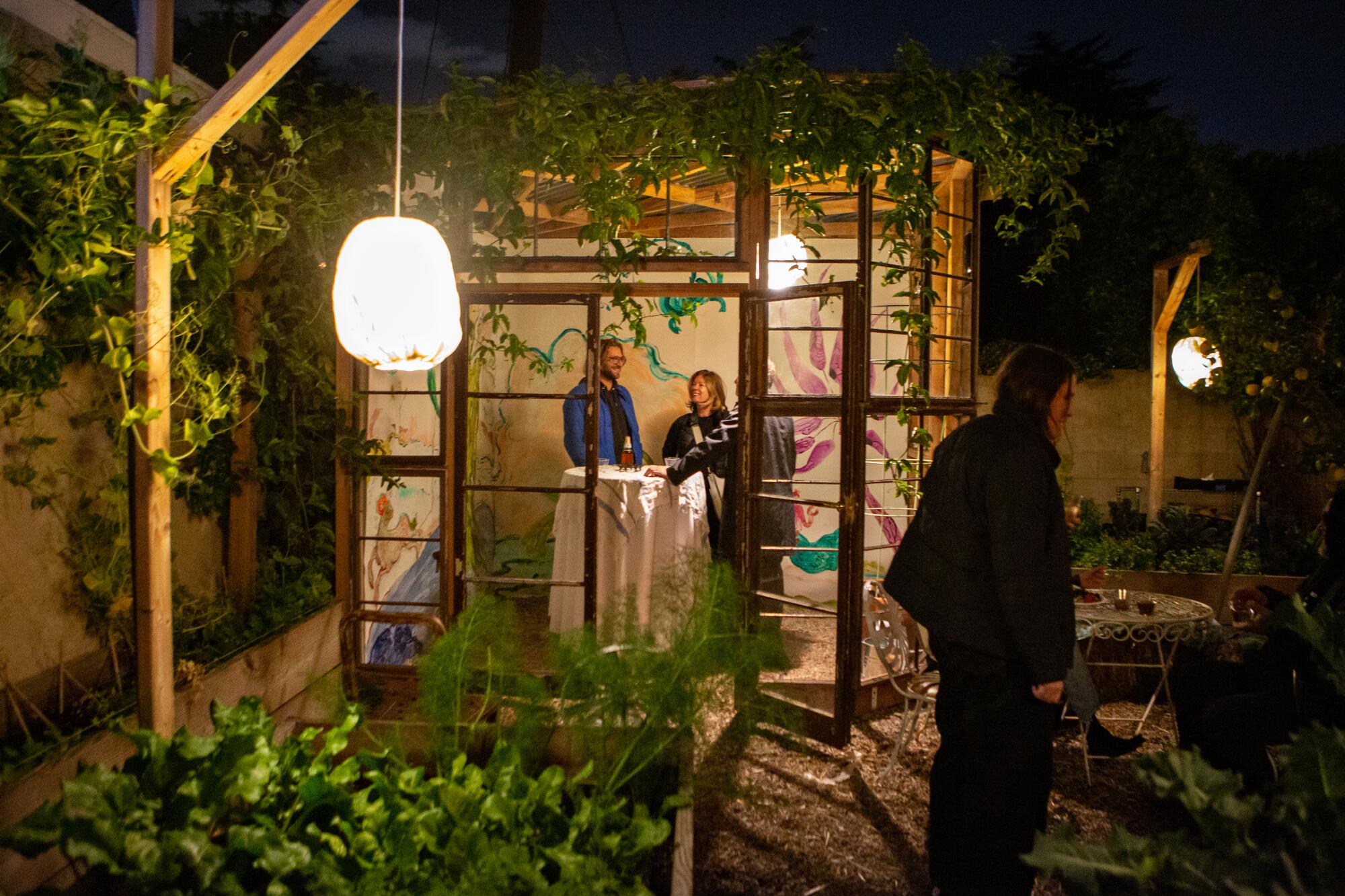
For those who don’t remember, a party is a kind of deliberate, yet free-form social context generated for the purpose of …
I don’t remember.
Oh, I’ve been to parties in the last two years. Since the onset of the pandemic they’ve tended to fall on either end of an emerging social spectrum. There are brand-driven, micromanaged content mills where everything is photographable but nothing is beautiful. No one knows how to act without a phone or a customized cocktail in hand. Their memory exists as algorithmic social media strategies, soon to be drowned out by the next sponsored event.
There are the more organic but equally taxing speakeasy-style bacchanals, where, as the night progresses, a more and more catholic range of vices begins to emerge from pockets and back rooms. No one takes photos, but neither can we stand to look one another in the eye. Their memories exist as stories to tell at other parties — I saw what’s-his-face on drugs, so-and-so fell off the terrace, we didn’t go home until some-such-hour in the morning. The dangers there lie less in the substances but the anecdotes, which, after reaching a certain level of repetition, atrophy into proxies for a personality.
What lingers from a Del Vaz party is a feeling.
Jay Ezra Nayssan started Del Vaz Projects out of his West Los Angeles apartment in 2014, curating intimate exhibitions that were an extension of his hospitality. “Del Vaz” is adapted from a Farsi phrase that translates roughly to “openhanded” or “openhearted” and is the aegis for a range of curatorial projects that intersect art with agriculture, education and themes of domestic space. Since July 2020, Jay has run Del Vaz with his partner, Max Goldstein, out of their Spanish revival home in Santa Monica.
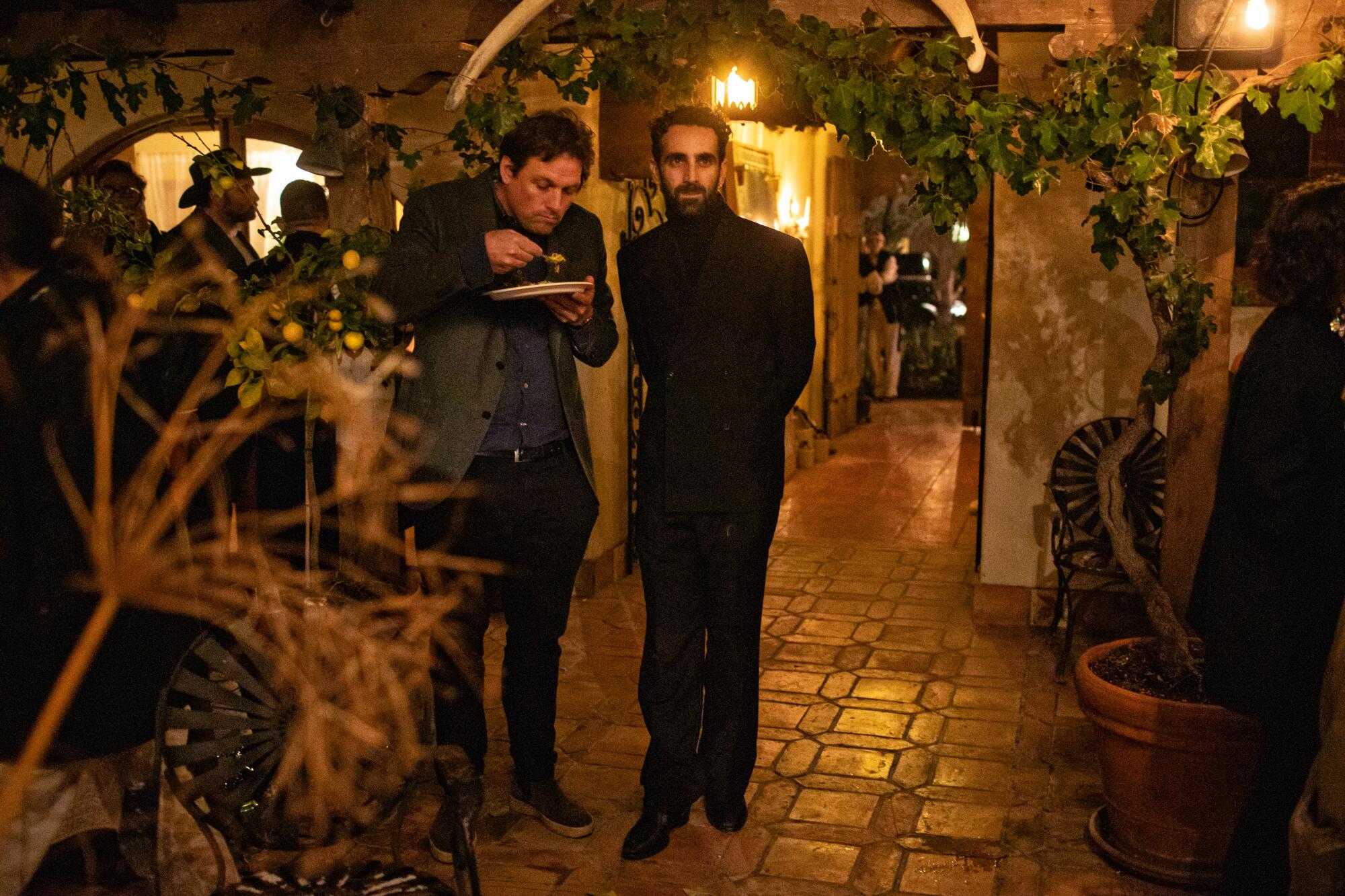
I met Max in 2019 at the Venice Biennale. He offered to install an IUD in me and I nearly choked on my panna al cioccolato before I learned he was a physician at UCLA. He has since performed IUD insertions for a number of female artists in L.A. (I’m going to see Doctor Max, we say) while giving medical care to BIPOC and uninsured people whenever possible. The house was designed by Frank E. Bivens in 1929 and was Shirley Temple’s childhood home during the height of her career. Casually referred to as “casa Shirley,” there are photos of Temple and her family playing on the property, handed down from the previous tenant, displayed next to paintings by Keith Boadwee and Michael Henry Hayden.
Inside there is studio space for visiting artists and a garden space for beekeeping, outdoor baths and seasonal vegetable growing. There is a tiny greenhouse that doubles as a chisme room or houses coolers of handmade popsicles from Mateo’s Ice Cream, or, as it does on this night, is used for extra dining space for the opening of the exhibition “Shell” during Frieze week. Jay and Max host dinners for every exhibition, a Persian barbecue prepared by chef Fabian Arana: koobideh and chicken kabob, grilled vegetables, shirazi salad, sabzi and lots of lavash to scoop it all up, served buffet style with disposable flatware and eaten wherever you can find a seat.
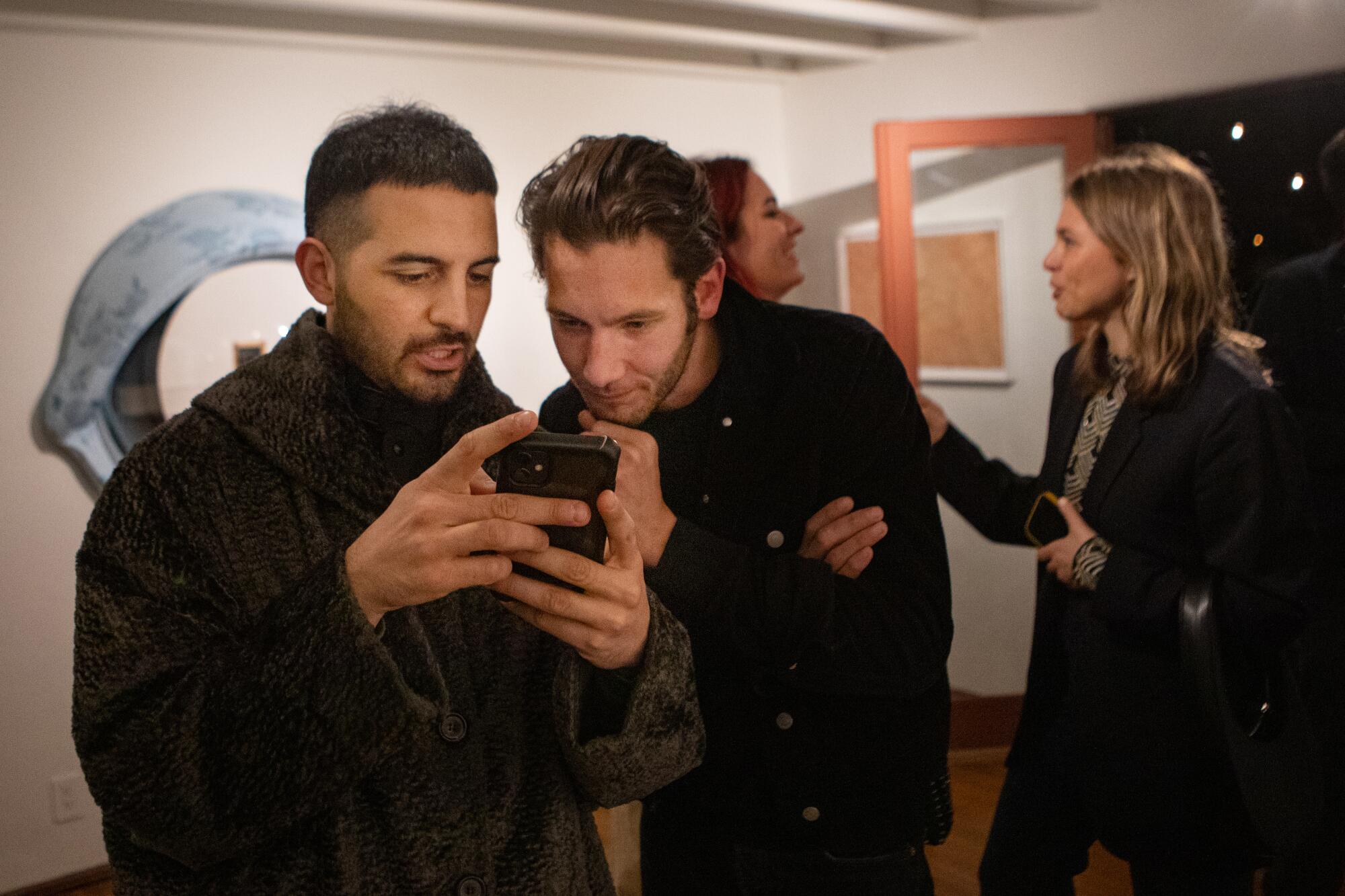
Temple’s bedroom has been turned into an exhibition space, now occupied by works, from Olivia Erlanger and the late artists Nicola L. and Heidi Bucher, suggesting dress and undress and the home as a carapace for such activities. Nicola’s 1970s-era “Cloud” hangs from the back wall, a painting with arms and legs and a face sprouting from the canvas. One could step into it like a soft exoskeleton or spiritual hazmat suit (the art critic Pierre Restany called these wearable paintings “pénétrables”). Erlanger’s “Act I” (2022), a dollhouse in a plexiglass globe with a wallpapered eyelid, peers into one of Bucher’s “Bodyshell” pieces from 1972 on the opposite wall, a filmy blouse hardened into a shell — the sort of item that might have been strewn on the floor in Temple’s days there, now pinned to the wall like an insect threatening to take flight.
There is the apothecary, a tiny office-turned-storefront off the main courtyard with objects and imbibables created by friends and artists or culled from the flora and fauna cultivated in the backyard. Del Vaz now operates as a 501(c)(3), with Jay heading the exhibitions and publications and Max handling the grounds and finances. “The apothecary is really where we meet in the middle,” Jay tells me.
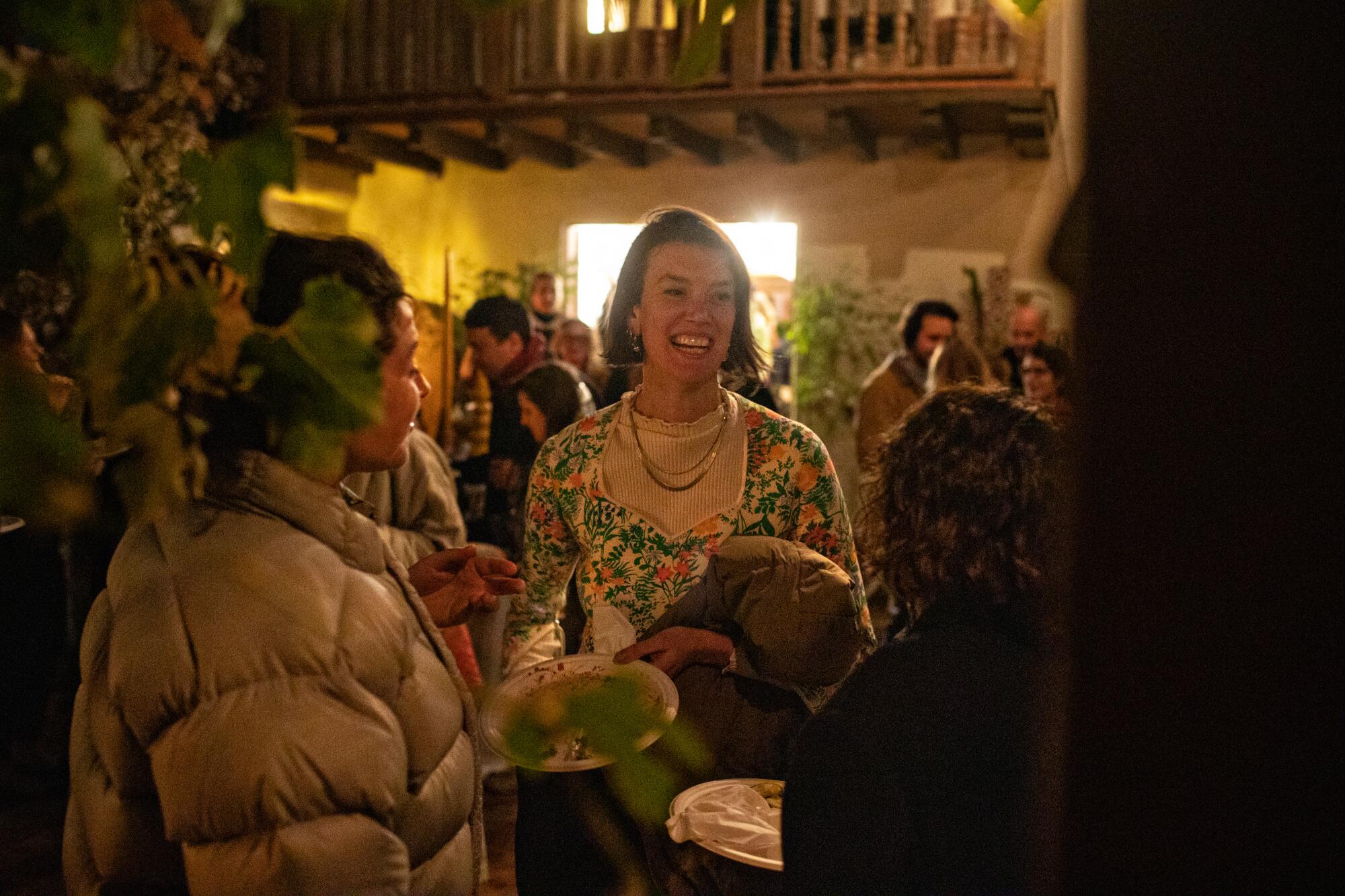
On this night there are handmade tablecloths by the artist Piero Golia next to jars of herbal anti-inflammatory salve created by Doctor Max, held together with beeswax made from the honeycombs on the grounds. On this night someone gets poked in the face by a branch from the cherry blossom tree.
There is the chicken coop painted pink and green to match the Beverly Hills Hotel. Inside the coop are the chickens — Cranky, Farah Diva and Joojeh, among others — who lay eggs that can be purchased by the half-dozen. The proceeds go toward programming, which has included educational visits for elementary school children. During a visit last spring, kids from the Hidden Gems watched baby chicks hatch from green plexiglass incubators nestled inside a black pearlescent casket, a sculpture by the artist Max Hooper Schneider as part of his solo show “Born in a Mausoleum” in spring 2021.
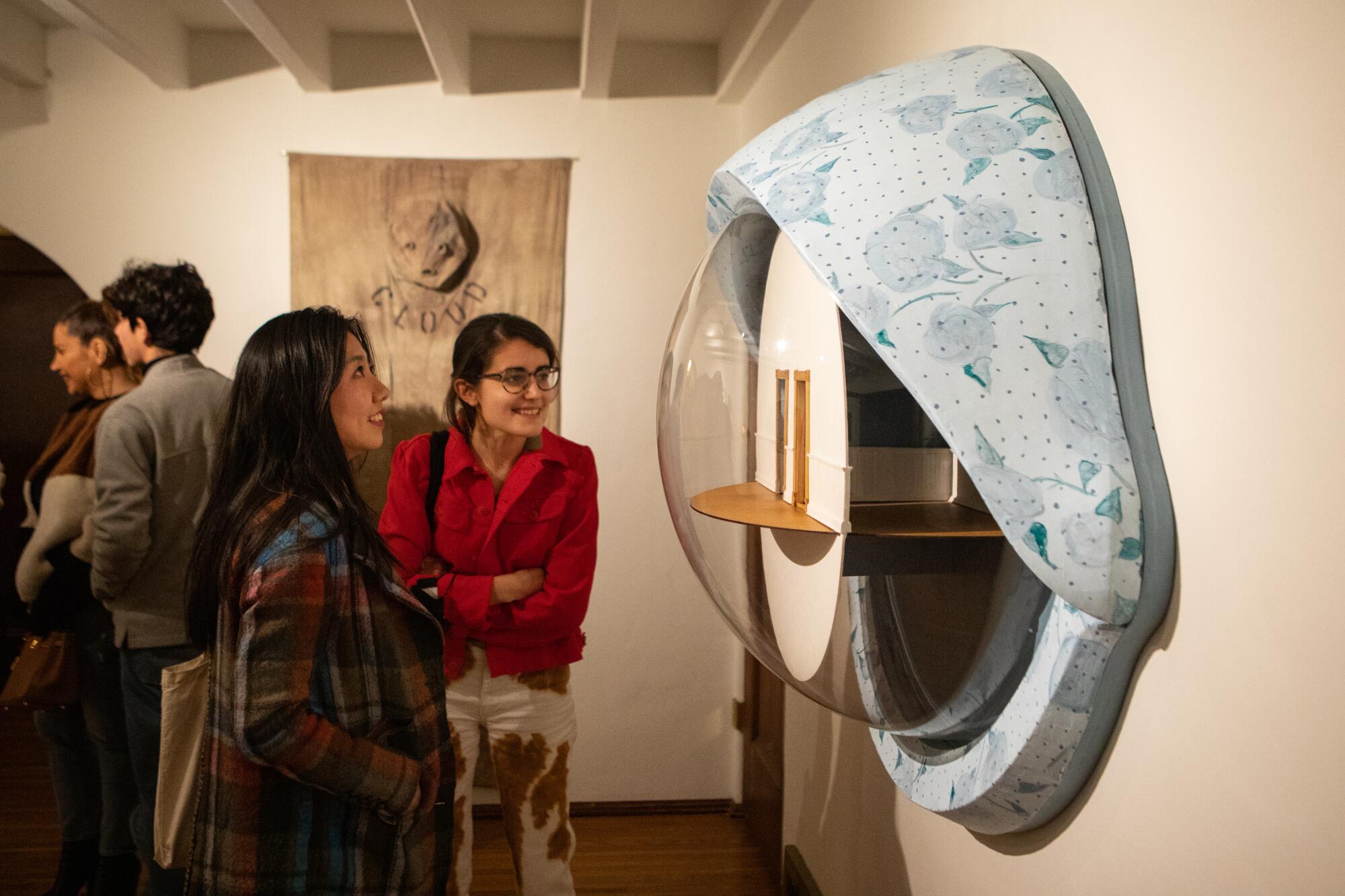
What I remember from that dinner is opening an unfamiliar door, hoping to find a bathroom, and instead finding Doctor Max casually running a fetal doppler over the belly of pregnant guest, while her husband and a few others sat by sipping red wine and scraping barberry rice from paper plates, the rose and saffron leaving behind pink and yellow streaks. I sat down and we all talked about the baby’s heartbeat.
Of all the parties I’ve been to I’ll never forget that picture. It illustrates the unconscious ease with which Jay and Max seem to address an emerging yet unmet need for a social affect based on the unlikely coupling of glamour and caretaking. I said I was thinking of getting my IUD taken out and Max offered to remove it after dinner (I declined, for now).
The ducks and chicks birthed throughout Hooper Schneider’s show are now occupying the coops and gardens, which were crammed close this week with extra tables and chairs and a second buffet for the opening of “Shell.” The outsize guest list was in part due to the concentration of Art People (I can’t think of a better umbrella term for us) alighting in L.A. for the Frieze art fair taking place this weekend in and around the Beverly Hilton.
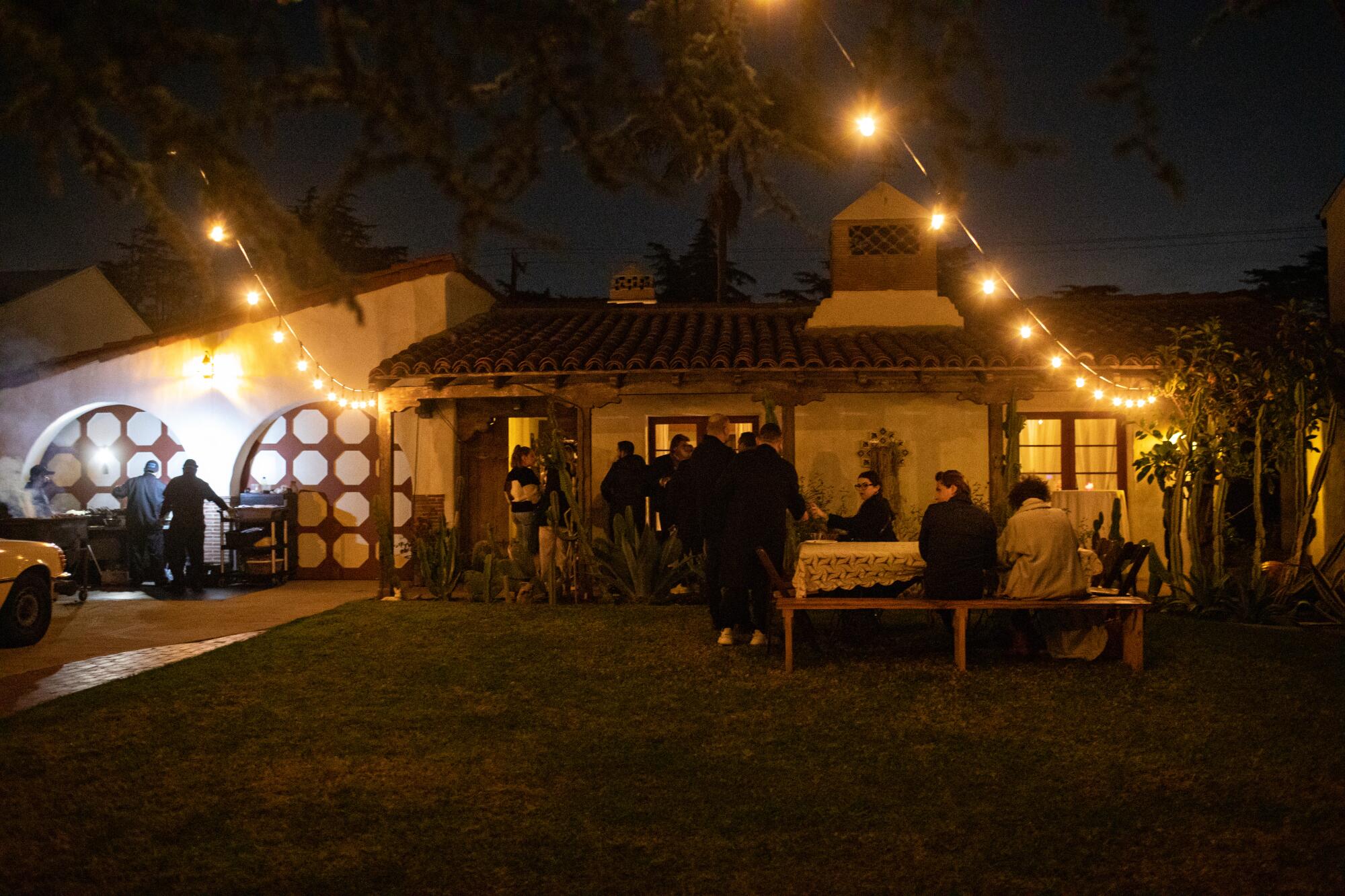
Max hopped behind the buffet to help get everyone served. Jay enlisted artist Lukas Geronimas to DJ after dinner, smoothing out what usually ends up as an ad hoc dance party with tipsy guests fighting over the aux cord while those too gravid with barbecue to dance sip ginger ale and watch.
All three artists in “Shell” permeate the line between themes like skin and shell, body and home, clothing and skin. Putting them together here anchors the ethos of the Del Vaz, which has always been a home, not just a gallery in a home.
'Shell'
Where: Del Vaz Projects, Santa Monica, CA.
When: Thursdays 12-4 PM or by appointment. Contact for address.
Contact: 310-999-3060, [email protected]
Through April 16.
More to Read
The biggest entertainment stories
Get our big stories about Hollywood, film, television, music, arts, culture and more right in your inbox as soon as they publish.
You may occasionally receive promotional content from the Los Angeles Times.










